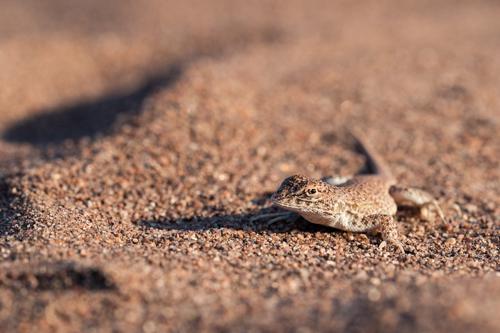Social media video featuring the project.
Release.
8 May 2019 Añelo, Argentina, Central and Latin America Reptiles
Does the Añelo Sand Dunes Lizard Lives in a Stressful Environment? Approaches to their Reproductive Biology and Immune Status
Research and conservation activities: 1) Generate basic scientific information on the Añelo Sand Dune Lizard population dynamics, viability and extinction probability in all of their relict populations; 2) Update the previous assessment of the conservation status of the species ; 3) Develop an action plan for the long-term conservation of ASDL that ensures appropriate territorial management and connectivity among the populations; 4) Create the basic biological information background for future implementation of legally protected areas. Educational/public outreach activities: 1) Provide environmental counseling and explain the conservation strategy for the Añelo Sand Dune Lizard to the oil companies; 2) Promote the importance of environmentally friendly practices in oil exploitation; 3) Work together with local schools (Añelo, Aguada San Roque and Chihuidos) to transmit appropriate conservation approaches involving children.

Liolaemus cuyumhue in its natural habitat. ©María Victoria Brizio.
This project focused in the conservation of a IUCN Critically Endangered species, the Añelo Sand Dunes Lizard (ASDL). ASDL only occurs at one locality in a small sand dune system of The Bajo de Añelo that covers less than 100km 2, and has an occupation area of less than 10km 2. Also, there is intensive oil and gas extraction that is causing continuous decline and fragmentation of its habitat. This include also road construction, encampments and soil movement. The problem is that there is no knowledge about ASDL natural history, but studies of related species have shown that small disturbances by human activities can reduce their natural densities producing local extinctions. This is why basic information about ASDL and a plan of biodiversity management is necessary. Our goal is to raise awareness on ASDL among entrepreneurs and local community and to create a management plan aimed at reaching effective protection over these environments. In this way, we would manage to conserve not only ASDL but also the entire biodiversity of this ecosystem.

Liolaemus cuyumhue in its natural habitat. © María Victoria Brizio.
Research and conservation activities:
1) Generate basic scientific information on the Añelo Sand Dune Lizard population dynamics, viability and extinction probability in all of their relict populations;
2) Update the previous assessment of the conservation status of the species ;
3) Develop an action plan for the long-term conservation of ASDL that ensures appropriate territorial management and connectivity among the populations;
4) Create the basic biological information background for future implementation of legally protected areas.
Educational/public outreach activities:
1) Provide environmental counseling and explain the conservation strategy for the Añelo Sand Dune Lizard to the oil companies;
2) Promote the importance of environmentally friendly practices in oil exploitation;
3) Work together with local schools (Añelo, Aguada San Roque and Chihuidos) to transmit appropriate conservation approaches involving children.
Social media video featuring the project.
Release.